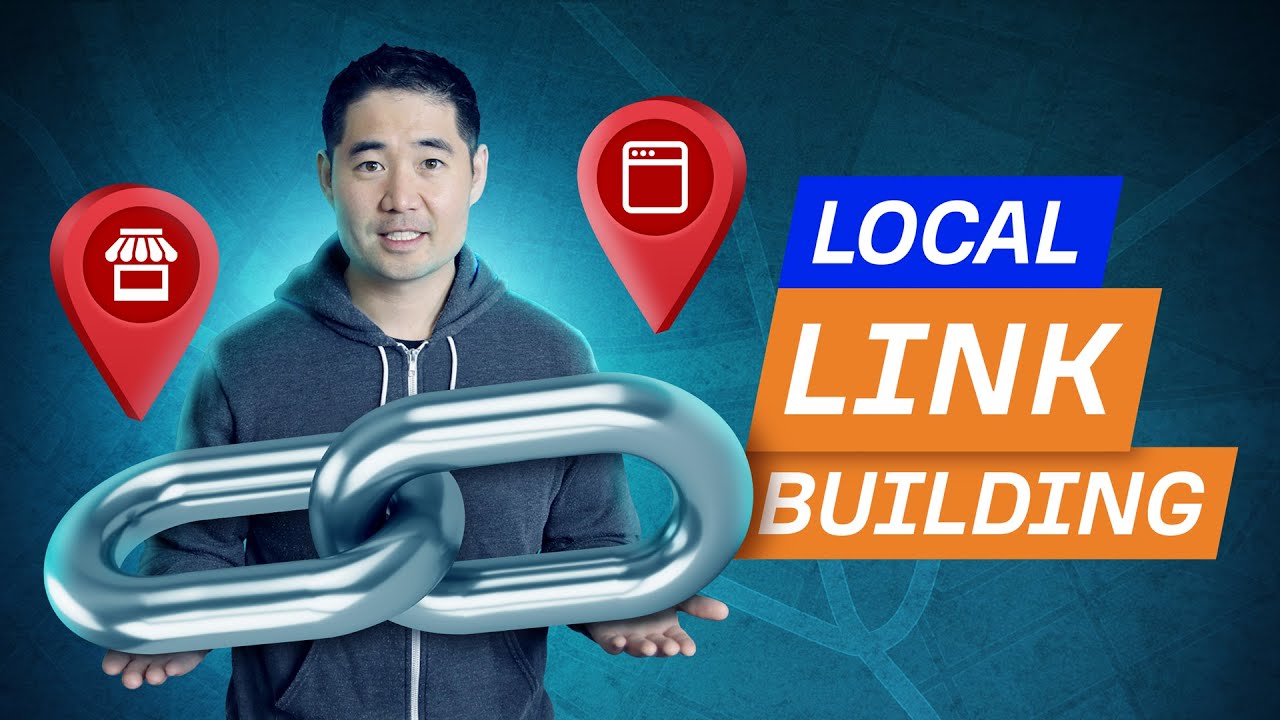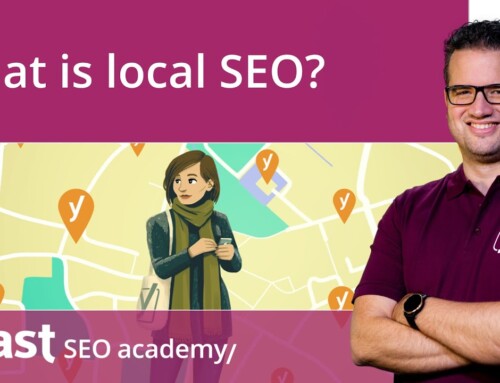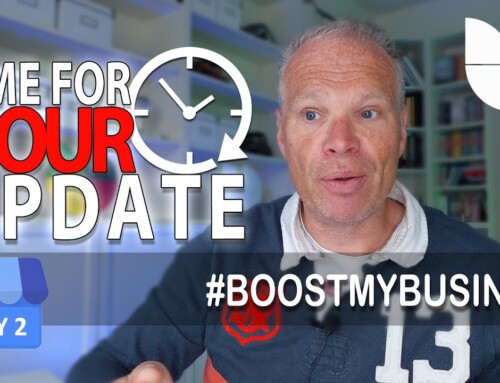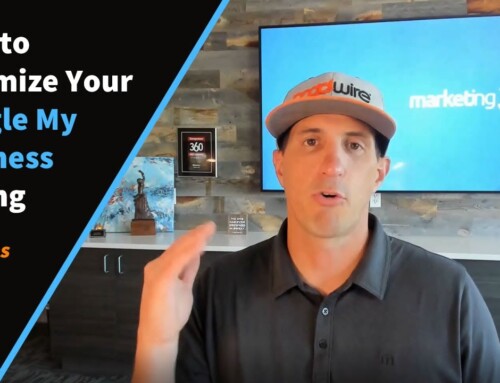If you want to rank yours or your client’s local business higher in Google, then you’re going to need backlinks. In fact, a 2018 study by Moz showed that backlinks are an important ranking factor for both Map Pack and localized organic rankings. But unlike general link building tactics where location isn’t always hugely important, links from local sites seem to have more impact when it comes to link building for local SEO. So in this tutorial, I’m going to show you 6 ways to find solid local link prospects that’ll help you rank your local business higher in Google. Stay tuned.
[music] Now, before we get into the actual tactics, it’s important we differentiate between local link building and just link building in general.
Link building is the process of getting contextually relevant websites to link to a page on your website. And local link building is basically the same thing, but with one additional but very important layer. Ideally, you want to get backlinks from pages that are both contextually and locally relevant to your website. For example, let’s say you’re a photographer in Toronto and want to get backlinks to your site.
Getting a link from a page on how to take good pictures would certainly be contextually relevant, but this site lacks locational relevance. It’s a blog that targets a global audience. Now, there’s nothing wrong with these links but it’s ideal if you can get a link from a page like this where there’s contextual relevance and it’s on a locally relevant website. And if we add in authority to our venn diagram which is authority, then the ideal backlink would land somewhere in this sweet spot. But finding “ideal” links isn’t always possible so it’s perfectly fine to get contextual or locally relevant links too.
Now, while the difference doesn’t sound that big, your approach to finding, qualifying and pitching link prospects will be different from most link building tactics that are usually talked about in a global context.
Now, the good thing about local SEO when it comes to backlinks is that there won’t be as much competition because you’re competing with local players. But the downside is that you may need to get more creative in finding link prospects because there will likely be fewer targets compared to a site doing global SEO. So let’s talk about some easy local link building tactics. The first way is to join your local chamber of commerce.
A chamber of commerce is simply a business network for local organizations. And most major cities and even smaller suburban towns will have a chamber of commerce. And these kinds of links would fall right into this section in our venn diagram.
Chamber of commerce websites often have high authority and local relevance, but aren’t the strongest in terms of contextual relevance because they’re usually just directory links. Nevertheless, they’re easy to get and not bad at all.
So to get started, just search for “chamber of commerce” and your city. Then go to one of those sites and you should be able to easily sign up for a membership. After you’ve paid for your membership, you should be added to their directory with your business’s name, address, phone number, and website URL.
Now, in addition to becoming a member at your local chamber of commerce, you may want to consider providing member discounts as it can lead to new business as well as a link back to your site. The next way is to join niche-relevant business associations.
These types of links are much like chamber of commerce links. For legitimate business associations, authority will be high and local relevance will be there too.
So to find niche-relevant business associations, you can search in Google for any of these search queries. Take a screenshot and let’s run through an example. With Ahrefs’ SEO Toolbar enabled, I’ll search for “toronto photographers association,” which is my city + my hypothetical niche + association.
And right within the SERP, you’ll see SEO metrics for each domain and page. Now, if we visit this page, and go to their member directory, you’ll see that indeed, they do have indexed URLs with outbound links to their members’ websites. Now, you might consider the two types of links that we’ve discussed so far as glorified citations because they don’t carry much weight in terms of topical or contextual relevance. So it’s important that we also talk about getting backlinks within content. These are typically harder to get, but generally speaking, the tougher it is to acquire a link, the more valuable it’ll be.
So let’s move on to the next tactic which is local resource page link building.
Resource page link building is where you get backlinks from web pages that curate and link out to useful industry resources. And it works really well because the purpose of the pages are to literally link out to relevant and helpful resources. Now, in our venn diagram, resource page links will usually fall around here, where contextual and locational relevance are decent. But on occasion, you’ll be able to find some websites that have decent domain-level authority.
So let’s assume that we’re building resource page links for a plumber in the UK.
To get started, I’ll go to Google and search for something like inurl:resources.html site:co.uk, and then I’ll add a word like “plumbing” since it’s relevant to my niche. And now you can see sites that contain resources.
html in the URL, are on a co.uk domain and include the word “plumbing” on the page. Again, you can enable Ahrefs SEO toolbar to get domain and page level metrics for each of these results. From here, you’ll want to do two things.
#1.
Visit the pages to see if they actually link out to external websites. If they don’t, then it’s probably not worth your time to ask for one. And #2. Use some common sense. If you’re a plumber and you’re asking another plumbing company down the road to link to you, then it’s probably not going to happen.

Now, you can alter your search a bit because there could be tons of locally relevant websites using a generic top-level domain like .com. So let’s search for inurl:resources, your city and state, and then your niche-relevant keyword. Filter through the list and then send your link pitches where appropriate. But you shouldn’t stop here.
You can also search for tangential businesses in the same location. For example, if you’re a wedding photographer in Toronto, you might want to look for flower shops, event venues, cake shops, etc. So you might search for “inurl:resources.html toronto wedding venue.” Then click on the results and see if there are any appropriate places for you to ask to be considered as a resource.
We have a full video on doing resource page link building at scale, so I highly recommend watching that if you want to do this efficiently.
Alright the next tactic is to guest post on local websites. Guest posting is when you write content on someone else’s website. And this tactic falls smack dab in the middle of our venn diagram because when you guest blog, you can handpick the sites you want to write for. To get started, you can use Ahrefs’ Content Explorer to search through billions of pages of content and filter prospects by their SEO metrics.
So let’s say you’re a photographer in Australia. I’ll search for “title:photography site:au.” This will narrow down results to pages that mention photography in the title and live on a .au domain. Next, let’s hit the one page per domain filter since we don’t need to pitch the same site multiple times.
I’ll also exclude homepages since we’re looking for local websites that have blog posts.
And they’d likely be more receptive to a guest post pitch. Now, since we’re searching for guest blogging opportunities, let’s set a word count filter to show pages with at least 500 words in the content which will exclude gallery, contact, and other thin pages. Finally, we’ll set a Domain Rating filter with a minimum value of 30 and a maximum value of 60. And this will show us websites that have decent website authority.
And now we have a very manageable list of blogs we could pitch for a guest writing opportunity. Again, you can alter the search and replace the “site” part of the query with your city name to find potential local opportunities too. Alright, the next tactic is to get featured on local list posts. For almost any product or service, there’s likely going to be some “best of” lists. For example, “best mexican restaurants in Seattle,” “best helicopter tour nyc,” etc.
Plus, there’s going to be variations like “fun things to do in london” and “child-friendly activities in chicago.” Bottomline: people are always looking for options and there will almost always be blog posts to serve their needs. You just need to become one of those options. These links are great because not only do they fall right in the middle of the venn diagram, but they’re also a great way to get customers through your doors. So to get started, just search for a query that’s likely to bring up a list in your area.
For example, “best italian restaurant in Toronto.” And since I have Ahrefs’ SEO toolbar enabled, we can see both page- and domain-level metrics for the search results. Now, when you’re looking through the list, you’ll want to pay attention to pages that are likely blog posts and ignore directories like Trip Advisor and Yelp. So this one from Toronto Life seems to make a whole lot of sense. From here, take a look through other restaurants they’ve mentioned and if you feel your food or whatever it is that you offer is comparable or better than the rest, then consider pitching yourself as a potential candidate.
For example, you might say: “Hi Benjamin, My name is Sam and I’m the owner at Sam’s Italian Eatery in the Danforth. I saw your post on Toronto’s best Italian restaurants and was heartbroken to see we weren’t included. But hey, it’s not your fault 🙂 We just opened up our first restaurant in Toronto and brought in world renowned chef, Samo Ferrari. If you’re open, I’d love for you to come try our restaurant so we might be considered for inclusion in your list.
No obligations at all!
Here’s a preview of our menu: [Link] If interested, please let me know a date and time that works best for you. We’d love to have you! Cheers, Sam” Now it’s just a matter of rinsing and repeating and trying to get on every list in the top 10 if possible. Alright, the last tactic is to look at your top organic competitors’ backlinks. The logic behind this tactic is that if your competitors are ranking at the top of Google, then they likely have backlinks that are moving the needle.
So it’s worth finding common backlinks between your competitors and then reaching out to these sites to try and get them for yourself. To get started, go to Google and search for something like “your niche + city.” So I’ll search for “mexican restaurant toronto.” From here, you’ll want to gather a list of your competitors’ domains using the Map Pack and organic results.
And we want to avoid sites like directories as well as blogs because we’re looking for real business competitors here.
Alright, so I’ve made my list of around eight competing restaurants. Now we need to find common backlinks between these sites. So I’ll go to Ahrefs Link Intersect tool and in the top section, I’ll enter all of my competitors’ domains. And in the bottom section, I’ll add my hypothetical Mexican restaurant’s domain. Now, let’s run the search.
And now you can see the websites that are linking to your competitors, but not you. As a general rule of thumb, the more competitors that a website links to, the more relevant the referring domain will be to your site. For example, if we click on the link from Narcity to this competitor, you’ll see the link comes from a post on Toronto’s best taco restaurants – a perfectly good page to get a link from. Just make your way through the list and you should be able to find more than enough link building opportunities for your site. Now, these are just a few ways to get backlinks to your local business’s website.
So go and try them out and if you enjoyed this tutorial, then make sure to like, share and subscribe for more actionable SEO and marketing tutorials. I’ll see you in the next one..
Read More: Yoast SEO Premium Plugin v18.0 GRATIS
Read More: Top Tips for Google My Business | The Journey
Read More: Yoast SEO Premium Plugin v18.0 GRATIS









